As plants grow, they absorb a myriad of nutrients to aid their development. Some of these nutrients, like nitrogen and phosphorus, are well known for playing pivotal roles in plant growth and health. However, there is another element that does not receive as much limelight but has been shown to significantly benefit plants — silica.
This article explores the science-backed advantages of using silica to boost plant growth and production. Key information is provided on what silica does in plants, what forms to use, optimal application rates and timing, and expected growth improvements.
By the end, the reader will understand the mechanistic actions and worthwhile advantages of incorporating silica into their gardening, landscaping, farming or hydroponics efforts.
What Is Silica?
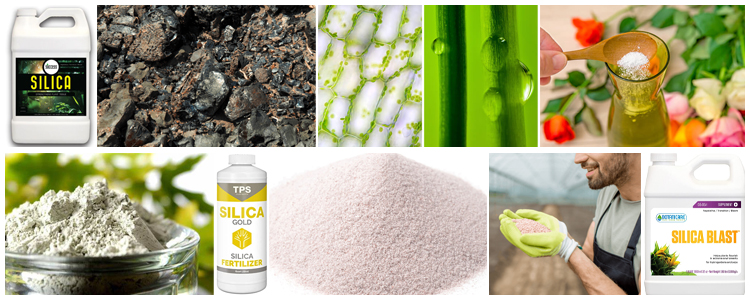
Silica refers to silicon dioxide (SiO2), a compound made up of silicon and oxygen atoms. On earth, silica is the second most abundant mineral after feldspar. It makes up over 12% of the earth’s crust by mass.
Silica occurs in both crystalline and amorphous forms. As a mineral, it comprises almost pure silica with trace amounts of aluminum, iron, calcium and sodium. Quartz, an abundant crystalline form, makes up 12% of the earth’s land surface. Amorphous silica has no defined crystalline structure and is found in diatomaceous earth, rice husks, horsetail and lumber slash.
In plants, silica is absorbed from the soil solution as monosilicic acid [Si(OH)4]. This soluble form of silica travels to the roots via mass soil water flow. Once in the root tissue, the silicic acid polymerizes into insoluble amorphous silica gel (SiO2•nH2O) that becomes integrated into the cell walls and intracellular spaces. This boosts structural rigidity and protection against abiotic and biotic stresses.
Overall, silica forms one of the essential nutritional blocks that allow plants to achieve optimal growth and production. Although silica is not classified as an essential plant nutrient, research confirms that plants provided adequate silica exhibit better health, more robust structure, increased yield and improved ability to overcome environmental pressures.
Advantages of Using Silica for Your Plants
The use of silica fertilizer provides observable improvements in plant performance and quality. Multiple studies confirm supplementing with soluble silica sources leads to robust, healthy plants that yield higher with less input costs.
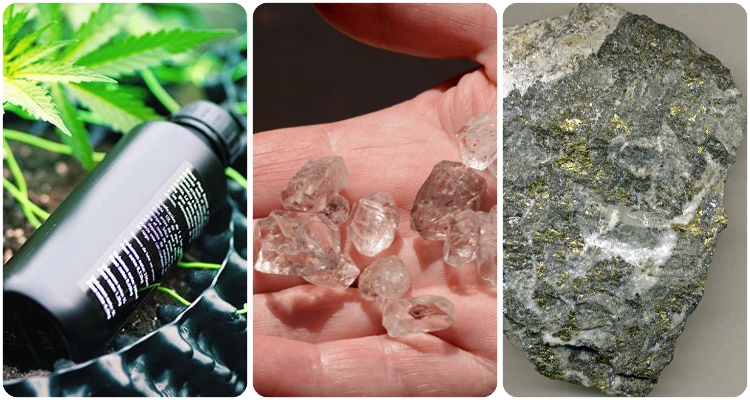
There are four main advantages growers can expect from applying silica:
- Faster growth rates. Silica stimulates faster cell division, resulting in more rapid plant growth. Silicic acid in plant tissue regulates enzymes involved in cell wall synthesis, allowing cells to divide and expand quicker. With abundant silica, plants achieve faster canopy closure and larger leaf surface area, boosting light interception and photosynthesis. The end result is accelerated vegetative growth and quicker crop cycles from planting to harvest.
- Improved nutrient uptake. Silica increases number and depth of plant roots, providing greater surface area for water and nutrient absorption. Thickened cell walls prevent cell collapse, ensuring upright plants with unimpeded conductive vascular tissues. Soluble silicates also limit aluminum toxicity, preventing nutrient lockout in acidic soils. Consequently, silica-rich plants take up more nitrogen, phosphorus, potassium and other essential nutrients.
- Greater resistance to abiotic stressors. Silica reinforces cell walls, protecting plant tissue from harsh environmental conditions like drought, salinity, heavy metals and temperature extremes. Fortified cells can better maintain turgor pressure, preventing wilting. Silica also regulates stomata closure, reducing water loss from transpiration. In effect, supplemental silica shields plants, allowing them to withstand stressful growing environments.
- Higher crop yields. With faster, unimpeded growth and greater tolerance to suboptimal conditions, silica translates to noticeable jumps in plant size, quality and yield output. Multiple multi-season field studies demonstrate 10-30% increases in crop quantity and quality from silica fertilizers alone, at little input cost. The bottom line is abundantly clear — silica boosts the grower’s net production and profitability.
- Increased pest and disease resistance. Silica deposits under plant epidermal cells fortify and mechanically strengthen cell wall structure. This acts as a physical barrier against invading fungi and insects trying to penetrate plant tissue. Reinforced structural cells also restrain and slow spread of infections, giving plants added time to biologically respond. Ultimately, silica reduces pest and disease pressure without added pesticides.
- Silica reduces harmful impacts of toxins. Soluble silicates limit uptake and transportation of heavy metals like aluminum, iron, manganese and cadmium in plant tissue. Silica gel deposits also buffer toxicity, preventing nutrient lockout. Additionally, silicic acid enhances activity of detoxifying peroxidases while reducing lipid peroxidation damage. By mitigating toxin exposure, silica preserves cell health and upholds plant vigor.
- Improved tolerance of drought, frost and lodging. Silica-enriched cell walls better retain moisture in times of low water availability, preventing drought stress responses. Fortified stems, shoots and leaves also withstand harsh temperature shifts and physical damage from wind, rain and hail. Thicker cell walls prevent winter freeze damage and reinforce plant structure against late-season lodging.

 Aerospring 27-Plant Vertical Hydroponics Indoor Growing System
Aerospring 27-Plant Vertical Hydroponics Indoor Growing System
- Easy to use aeroponic system for your home
- Fan - Grow Lettuce, Herbs, Veggies & Fruits
- Grow smart & eat healthy, 20 gallon water reservoir Grow Tent, LED Grow Lights
Best Sources of Silica for Plants
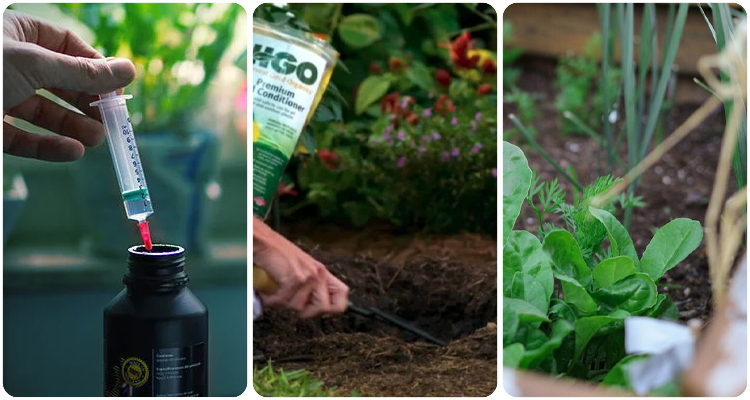
When looking to supplement with silica, it helps to understand the primary forms available and best practices for application. There are essentially two application methods — adding soluble silicates to nutrient solutions or soilless media for absorption by plant roots, or foliar feeding plant leaves and stems with diluted silica solutions. With a basic understanding of forms, rates and frequencies, let’s review some of the best silica nutrient sources to consider for your plants:
Potassium Silicate
Potassium silicate is a soluble compound containing potassium, oxygen, and silicate. It easily dissociates into plant-available silicic acid and is one of the best silica sources for hydroponics or soil growing. Potassium silicate solutions can be applied as a foliar spray or added directly to nutrient reservoirs. Ensure product is fully dissolved before application. Use caution when mixing, as potassium silicate solutions generate heat upon dilution.
Target application rates between 0.5-5 ml per liter for hydroponics, or 5-30 ml per gallon as a foliar feed. Potassium silicate is safe for all plants at recommended rates. It provides a readily-absorbed source of silica and potassium. Solutions require pH adjustment to avoid excess alkalinity. Overall, potassium silicate offers growers an effective commercial silica product.
Diatomaceous Earth Silica
Diatomaceous earth (DE) is a naturally occurring soft sedimentary rock formed from fossilized diatom silica shells. The powdered silicon dioxide of DE can be mixed into soilless media or root substrates to provide a slow-release plant available silica source. DE breaks down over time, continually supplying soluble silicic acid to plant roots.
Incorporate 1-5% diatomaceous earth by volume into soil or soilless media. More frequent applications may be required for container plants. Wear a dust mask when handling dry DE powder. As DE absorbs lipids, overexposure can dry skin and respiratory tissue. Once incorporated into growing media, diatomaceous earth offers growers a safe, steady release silica amendment.
Mono Silicic Acid
Mono silicic acid is the plant-available form of silica taken up from the soil by roots. Solutions of stabilized monosilicic acid contain 20-50% soluble silica as SiO2, pH adjusted between pH 3–5. This ensures maximum silica solubility without polymerization into colloidal silica particles. Mono silicic acid amendments provide the most direct form of silica nutrition to plants.
Foliar application rates range from 50-200 ppm silica, or 0.5 to 2 ml stabilized monosilicic acid solution per liter of water. Apply every 1 to 4 weeks during the growing season. For soil application, drench 1–2 liters per 3 square meters of growing area around plant root zones every 4 to 8 weeks. Mono silicic acid gives growers a simple, inexpensive liquid option.
Rice Husk Ash
Rice husk ash is the leftover waste powder from burning discarded rice husks, a common byproduct of rice production. This ash contains over 90% amorphous silica particles, which slowly release soluble silicic acid into soil pore water. Rice husk can be mixed into media, used as a root zone mulch or extracted into a crude liquid solution.
Incorporate rice husk ash at approximately 0.5-1 pound per cubic yard of soil, or 10-25% by volume, into custom soil blends. Reapply crushed rice husk mulch layers every 1 to 2 seasons as particles break down. For liquid application, soak rice husk ash overnight and filter, applying crude silica-rich liquid similar to other foliar feeds. Rice husk ash provides budget-conscious growers an ultra-affordable silica amendment.
What Are the Best Silica Supplements?
When researching silica supplements, growers face an array of products making performance claims. To narrow options, focus on soluble silicates with established agricultural track records and concentrations listed on packaging.
Top commercial silica supplements include:
- Potassium silicate solutions. Potassium silicate contains 10-30% soluble silica, allowing flexible dilution rates. It fully dissociates into plant-available monosilicic acid and delivers valuable potassium. However, it tends to raise pH and requires acidifiers or buffering when used in hydroponics. Follow label guidance for rates based on crop and application method.
- Stabilized monosilicic acid. Monosilicic acid solutions stabilized at 20-50% silicon dioxide ensure maximum solubility. pH balancing keeps silica plant-available without polymerization issues. As the direct form taken up by plant tissues, it leads to rapid absorption and response. Use 0.5-2 ml/L for foliar sprays or soil drenches.
- Diatomaceous earth powder. Diatomaceous earth provides 86-94% silica in a slowly soluble amorphous form. Mix this powder into soilless media or root substrates at 1-5% by volume. DE particles continually break down and interact with pore water to deliver soluble silicic acid. It allows effortless silica integration into existing growing practices.
- Bamboo leaf extract. Water-soluble bamboo leaf extracts contain 70% stabilized orthosilicic acid derived from bamboo leaves. This inorganic silica content, expressed solely as silicon dioxide, ensures a consistent potency and purity. As an approved organic input, bamboo leaf extract is suitable for organic crop production. Recommended application rates range from 0.1-0.5 ml/L depending on crop growth stage.
- Potassium silicate gel. Potassium silicate gel is a viscous silica solution standardized with potassium hydroxide for better concentration and solubility. With 100 g/L of silica expressed as silicon dioxide, it conveniently provides 20% soluble potassium silicate in a spreadable form. Use potassium silicate gel as an in-furrow soil treatment or side dress root dip during transplanting. Apply 200-300 g per cubic meter of soilless media or hydroponic substrate.
- Horsetail extract. The Equisetum arvense plant (horsetail) bioaccumulates silica at rates exceeding 15% of shoot dry matter. Steep horsetail herbs in hot water for several hours to extract soluble silicic acid into a crude tea. Filter and dilute the cooled liquid in a foliar spray tank for cost-effective application. With naturally variable silica content, test different horsetail harvests and adjust extract rates accordingly before full field treatment.
Toxicity of Silica
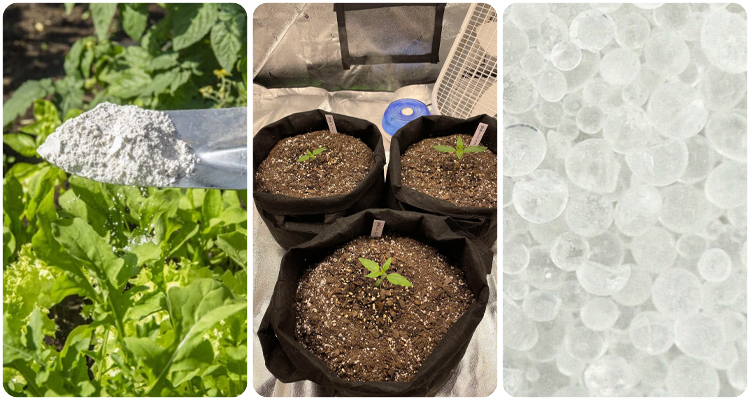
When looking at adding supplemental silica in concentrated forms, questions of toxicity inevitably arise. However, research studies confirm silica is remarkably non-toxic to both plants and soil microbes at application rates well above those typically advised.
Silicon has no known function in microbial metabolism, and exact mechanisms of toxicity remain unclear. Microbes essentially dissolve, transport, and expel excess silicates they cannot utilize. Most toxicity thresholds for bacteria and fungi exceed 1,000 ppm soluble silicon in laboratory media — 10 to 100 times conventional silica rates.
In plants, excess silica absorbed by roots precipitates inside vascular tissues as solid silica gel. This mechanical blockage and interference disrupts water flow, nutrient transport and photosynthesis. Visible symptoms include wilting, chlorosis, stunted growth and plant decline. However, silica accumulation requires 100–1000 times normal concentrations inside plant tissue before reaching toxic levels.
Silica is harmless when applied at recommended application guidelines. Always reference and follow dosage standards listed by product manufacturers or institutions. If applying custom field rates, limit silica to 100-300 ppm for hydroponics and avoid exceeding 50-100 kg soluble Si per hectare in soil cropping systems.
Most nutrient imbalances occur long before observable threats from silica toxicity. With reasonable precautions, growers can utilize supplemental silica worry-free.
FAQs
How does silicon shield plants from extreme conditions?
Silicon deposits in plant tissues create a rigid cell wall matrix that better retains moisture and withstands physical damage. Reinforced cells maintain shape and turgor pressure during drought and heat stress to prevent wilting, scorching, and desiccation. Silica also protects cell membrane integrity when tissues freeze, preventing winter kill. Thickened silica cells can further withstand the physical bombardment from heavy rain, hail, and wind without breakage or lodging.
How does silicon boost disease resistance in plants?
Soluble silicon delivered to roots polymerizes into an abrasive silica gel that deposits just under the cell wall surfaces of epidermal cells and vascular tissues. This layer mechanically blocks penetrating fungal hyphae and chewing insect mouthparts, which can no longer breach cell walls. In addition, the silica barrier slows disease movement through plant tissues, allowing more time for plant immune responses to activate before infections spiral out of control.
How frequently do indoor plants need silicon supplements?
For potted indoor plants, aim to supply soluble silicon every 2–4 weeks either in regular nutrient solutions/soilless media or as a supplemental foliar spray when watering. Check leaf tissue tests to dial in application rates and timing for particular species. Ensure adequate silicon levels between 50-150 ppm in soil pore water or hydroponic solutions for optimal results.
What are optimal silicon levels for plants?
Optimal silicon levels vary widely by species, soil conditions, and environmental factors. For greenhouse and hydroponic crops, target 50-200 ppm silicon in circulated nutrient solutions. In soil environments, crop-available silicon typically ranges 20-50 ppm, but can be elevated to 80-100 ppm for high performance varieties via amendments. Plan for 50-100 kg/ha silicon in soil, depending on yield expectations.
Is silicon plant supplementation safe from overdose?
Yes, silicon plant supplements are very safe from toxicity or overdose issues when manufacturer application guidelines are followed. Excess supplemental silicon not accumulated by plant tissues is excreted or converted to unavailable forms long before reaching levels that show phytotoxicity symptoms.
Published hydroponic trials confirm actual plant toxicity thresholds over 200 times higher than standard silicon rates. Still, optimal product performance is achieved by following labeled application rates.
Can silicon be provided simultaneously with regular fertilizers?
Yes, soluble silicon compounds can be effectively delivered alongside most common fertilizers without compatibility issues arising. Silicates have low ionic strength and do not readily bind other nutrients into insoluble precipitates. Some additional pH buffering is advisable when applying potassium silicate or sodium silicate in recirculating hydroponic systems. For soil, foliar, and drip irrigation methods, silicates integrate seamlessly into existing fertility programs.
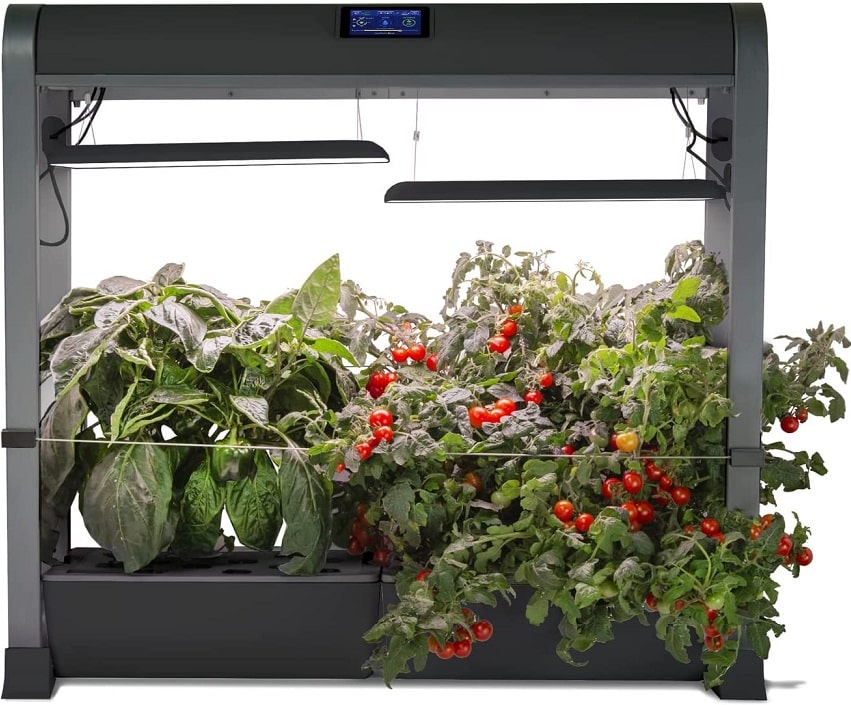
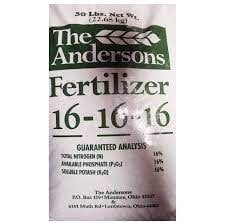

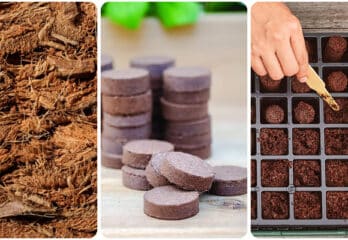



Leave a Reply